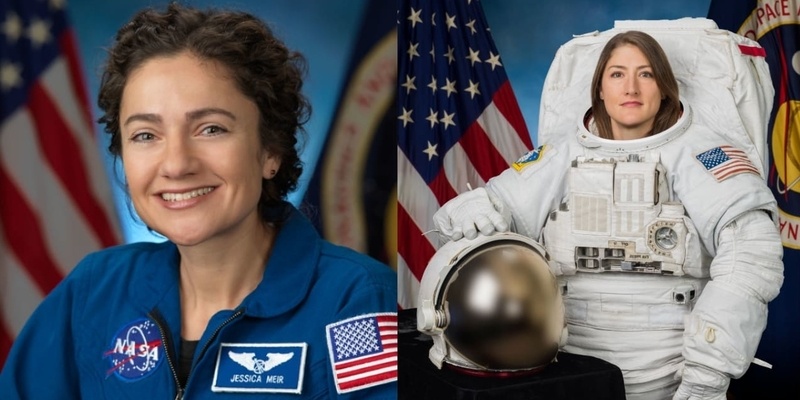Captured Against the Sun: How The Fall of Icarus Made History!
In an age where millions of photos are clicked every second, only a few manage to leave the world speechless. One such image, titled “The Fall of Icarus,” has taken the internet by storm. Shot by Arizona-based astrophotographer Andrew McCarthy, the photograph shows skydiver Gabriel Brown appearing to free-fall directly in front of the glowing surface of the Sun. Perfectly aligned, perfectly timed, and almost unbelievable to the eye, this image has become a global sensation overnight. But behind this breathtaking masterpiece lie months of planning, precise calculations, extreme conditions, and a story of human passion and collaboration.A Shot That Defies ImaginationMcCarthy captured the photograph on November 8 in a desert, using a series of high-powered telescopes. Brown, a musician, YouTuber, pilot, and experienced skydiver, jumped from a paramotor aircraft at an altitude of about 3,500 feet (1,070 meters). At the same time, McCarthy was stationed roughly 8,000 feet (2,440 meters) away with his equipment aimed directly at the Sun. The difficulty of capturing such a shot is almost impossible to describe. The Sun’s surface is a dynamic, fiery, constantly moving sphere. A skydiver in free fall moves rapidly and unpredictably. Aligning those two elements, one 150 million kilometers away, the other racing toward Earth, seems like something out of science fiction. McCarthy himself admitted the shot required an “absolutely preposterous” level of planning. But the result is worth every second of effort: a haunting silhouette of a human falling against the Sun’s burning chromosphere.Why This Photo Is So SpecialWhat makes “The Fall of Icarus” truly extraordinary is not just its visual impact but the fact that it may be the first photograph of its kind in human history. Capturing a person against the blazing surface of the Sun demanded extreme precision in knowing the Sun’s exact position, predicting the skydiver’s descent path, calculating distances and timing down to milliseconds, and using telescopes built specifically for high-intensity solar imaging. McCarthy’s equipment is designed to track solar activity like flares, prominences, and magnetic storms, but combining such sensitive instruments with a fast-moving skydiver had never been attempted before. The result is far more than a photograph; it is a remarkable fusion of science, art, physics, courage, and creativity, all aligned perfectly in a single, breathtaking moment.Andrew McCarthy: A Photographer Who Looks UpThis isn’t the first time Andrew McCarthy has captured the world’s imagination. The astrophotographer has earned a massive global following for his breathtaking images of space, many of which he shoots from his own backyard or from carefully chosen remote locations. His portfolio already includes remarkable feats: the International Space Station crossing the Sun, the ISS gliding in front of the Moon, rare and razor-sharp images of Jupiter in opposition, and vibrant close-ups of Mars, Saturn, and dramatic solar flares. Each photograph demands advanced equipment, enormous patience, and an expert’s grasp of astronomy, but “The Fall of Icarus” pushed his craft into an entirely new realm. Earlier this year, his viral shot of the ISS moving across the Sun captured not just the station but also a massive solar flare bursting behind it, a moment he considered one of his finest—until this latest creation redefined what he thought was possible.The Myth ReimaginedThe photograph’s title, The Fall of Icarus, draws inspiration from the Greek myth in which Icarus flies too close to the Sun and falls. But unlike the ancient story, this modern Icarus is not a tale of failure; it’s a celebration of human courage. Gabriel Brown, the skydiver in the photo, trusted the science, the planning, and the vision. At the exact moment McCarthy saw him align with the Sun’s disc, he asked Brown to jump. It was a leap of faith literally. In a short behind-the-scenes video shared on social media, McCarthy revealed that the project was far from simple.He described multiple failed attempts and equipment overheating. Despite these challenges, the final image is so flawless that it looks unreal. But it isn’t. It’s a triumph of human skill and persistence.A Moment That Belongs to HistoryExperts believe this may be the first documented photograph of a human captured against the Sun’s chromosphere. And given the technical risks and requirements, it may remain one of the rarest images ever created. “The Fall of Icarus” is not just a photograph; it’s a bold reminder that even in a world flooded with images, true creativity can still rewrite the rules. It shows that humans, even as tiny silhouettes against a star, can create magic through imagination, science, and courage.

 (1).jpeg)
.jpg)


.jpg)
.jpg)
.jpg)
.jpeg)
(1).jpeg)
